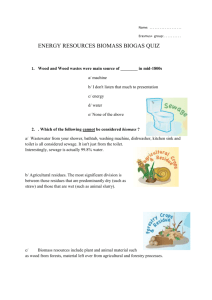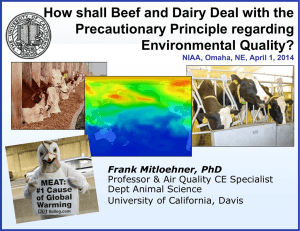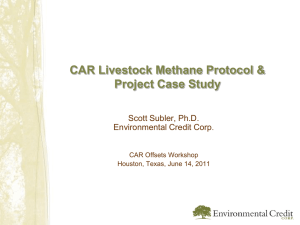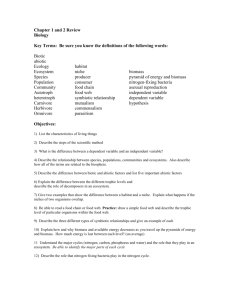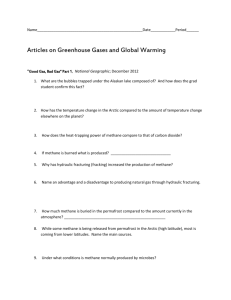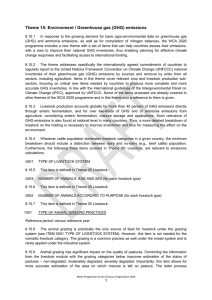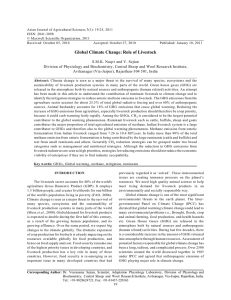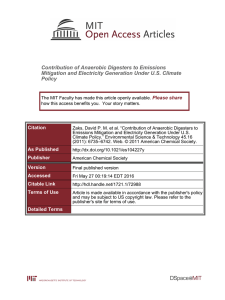Presentation Outline
advertisement
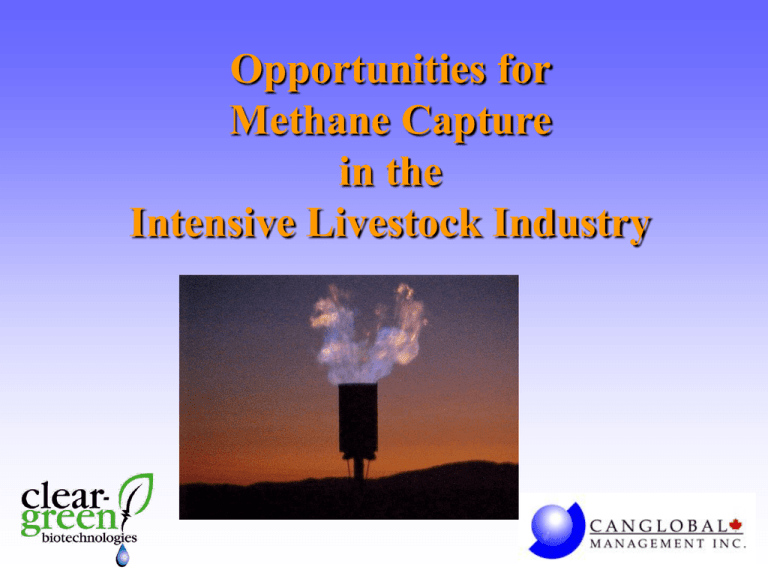
Opportunities for Methane Capture in the Intensive Livestock Industry Presentation Outline • Introduction to Canglobal and Clear-Green • GHG Impact from Livestock Production • Opportunities for Emission Reduction Credits • Practical Examples – Saskatchewan – Chile • Future Actions Canglobal Management Inc. • Canglobal Management is a Saskatchewan based consulting firm focusing on sustainable development projects in emerging economies • Strong focus in Latin America in Agricultural and Environmental Management Initiatives • Expertise in CDM Project Formulation, Feasibility Analysis, and Baseline Establishment • Canglobal has participated in World Bank, InterAmerican Development Bank, CIDA and CDM-JI funded projects Clear-Green Biotechnologies • Saskatoon-based technology company • Focused on design-build-own-operate aspects of waste utilization projects • Work primarily with agriculture and food sites across Canada – – – – Intensive Livestock Food Processing Slaughter Plants Municipal Sites GHG Impact from Livestock Production There are two types of emissions: 1. Directly from farms and farm land 2. Indirectly from industries serving agriculture (i.e. oil & gas, fertilizer, mining, manufacturing, transportation, food processing) GHG Emissions In Canada Industrial 7.3% Land Use 0.3% Waste 3.4% Agriculture 8.7% Energy 80.3% The GHG Profile from Livestock Production Methane is produced by: Nitrous Oxide is produced from soil and waste systems: Animals – Enteric fermentation Manure – biological activity Soil – Decomposition of organic matter encouraged by tillage Biomass – poor management of agricultural biomass results in decomposition and the release of methane CH4 = 21 x CO2 N2O = 310 x CO2 Manure management systems Overuse of nitrogen fertilizer Storage where the nitrogen present in manure is emitted in a variety of forms (NH-3, N-gas, N2O) If plants cannot use it, the nitrogen cycle de-nitrifies the N in the forms of NH-3, N, and N20 Tillage Increases soil decomposition of organic matter and the release of soil nitrogen as N2O Opportunities for Emission Reduction Credits • Soil-Carbon Sequestration – Reduce tillage, grow permanent forages, or agro-forestry where biomass can collect CO2 from the atmosphere • Manure Management – Processing of manure to prohibit release of methane & nitrous oxide – Better nutrient management to increase biomass production & reduce fertilizer use • Biomass Energy: from wastes & crops – Biogas, ethanol, or biodiesel to reduce fossil fuel consumption & fossil fuel dependency Practical Examples Saskatchewan Organic Waste Biogas (methane - energy) Nitrogen (Fertilizer) Phosphorous - Potassium (fertilizer) Water Project – NE Saskatoon Practical Examples - Chile • Concrete Opportunities – Business Environment receptive to Initiatives – Private Investment – Modern and expanding Intensive livestock Industry • Our Client – – – – Largest Hog Producer in Chile Digester – Hot and Cold Established Base Line – CDM-JI Funded Base line registration • Rules and regulations defined ??? Treatment and Storage Lagoon Press Solids Irrigation Digestor Storage Lagoon Treatment Future Actions • Agriculture can supply a large volume of high quality GHG Credits – Methane Capture – biogas systems – Nitrous Oxide capture – post treatment – Nutrient Management Contact Information Clear-Green Biotechnologies Ben Voss President benv@clear-green.com Tel: (306) 931-2610 Fax: (306) 931-6610 Canglobal Management Inc. Francisco Gardulski Manager Agricultural Services fgardulski@canglobal.net Tel: (306) 657-5673 Fax: (306) 657-5671
